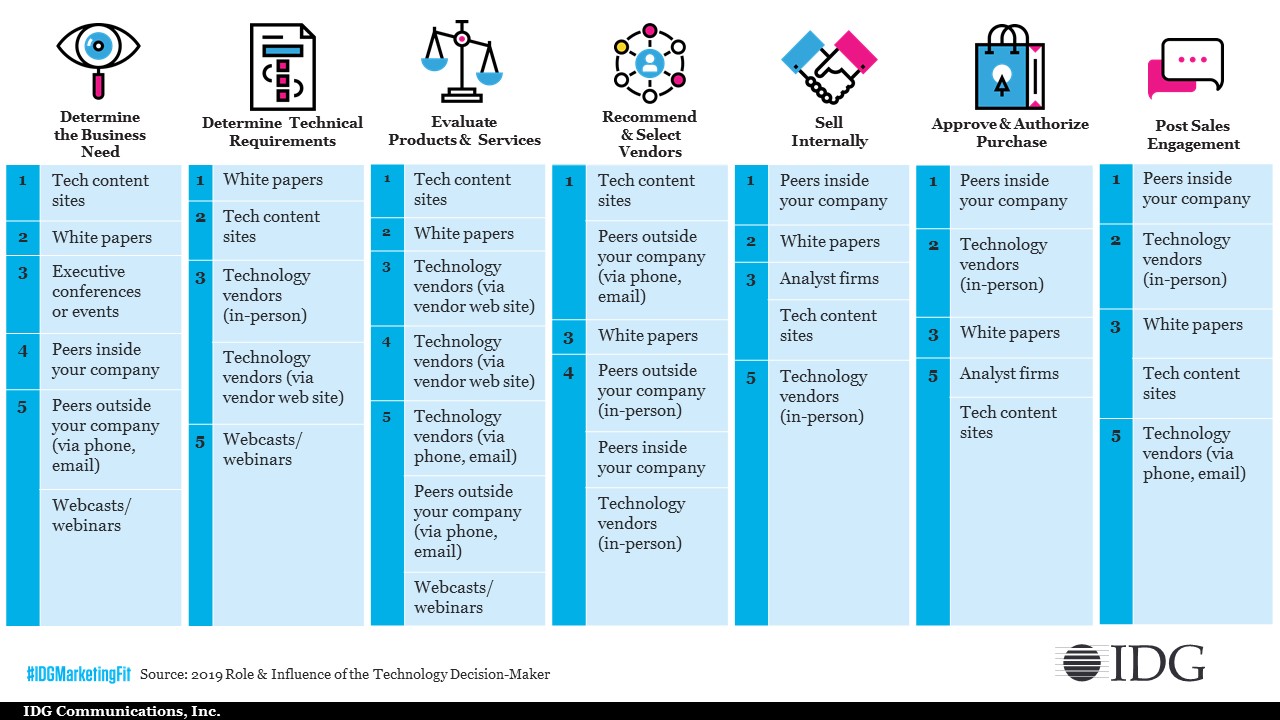Buyer personas are a staple of B2B content marketing, but the details of creating and applying them can spark panic in some marketers.
Relax, says Matt Naffah, Vice President of Strategic Marketing Services, IDG Communications. The process of building personas needn’t be intimidating. In fact, it’s a terrific way for an organization to understand buyer journeys, too.
Buyer personas are anonymized profiles of people who influence the buying process at a customer or prospect organization, such as the CIO, CTO, CFO and business-side decision-maker. In addition to basic demographic data, personas often include insights into motivations, interests, backgrounds and even hobbies of potential influencers. The richer the persona, the more value there is for marketers in making content decisions, Naffah said in this IDG MarketingFit Workshop webcast. Organizations typically already have most of the information they need to create personas, but they may lack a process for doing so.
Bring Personas to Life with the Three-by-Five Method
Naffah recommends getting started by convening what he calls a “three-by-five” workshop, consisting of a three-hour session with up to five customer-facing stakeholders in a room. The group should include marketing, sales, customer service and anyone who interacts directly with the customer. The collective wisdom of those stakeholders can be embellished by social listening, customer surveys and one-on-one customer interviews to form rich personas.
Personas are dynamic profiles that need to be revisited on a regular basis for updates and refinements. For organizations that are new to the process, start with a couple of personas and add others as you become more confident. Conduct customer interviews only after personas have been created. This enables you to focus on filling in information gaps rather than re-creating the entire persona definition process.
From that foundation, marketers can build a more comprehensive content marketing model defined by the context of the customer experience. The goal is to “create that contextual moment to deliver the right content,” Naffah said.
In the age of the empowered customer, aligning messaging in the right context is powerful. Just as automobile buyers now hold many of the cards when entering a car dealership, customers are now free to research their own decisions using a wide range of informational tools. IDG research has shown that the typical B2B buyer reads five different pieces of content before engaging with the vendor.
Map the Customer Journey to Anticipate Content Needs
“It used to be up to the vendor to tell the buyers what they wanted them to hear, but customers have switched that process around and are empowering themselves,” Naffah said. “If you’re creating a program that isn’t grounded in the right context you lose your audience.”
Depending upon where customers are in the buying process, that content may be a case study, informational video, thought-leading white paper, webcast or 3rd party research. As the chart below illustrates, customers consult different sources depending upon where they are in the purchase journey.
IT Purchase Path: Common Information Sources

IDG has developed a one-page worksheet available for use when mapping the customer journey and guiding content development and may be downloaded from the webcast. It uses a grid format that arrays the six stages of the buying process – determining needs, determining technical requirements, evaluating options, selecting vendors, selling internally and approving the purchase – along the top. Factors that influence decisions, such as touch points, information sources, potential barriers and decision criteria, are listed down the side.
Using information from the persona, marketers can map the ideal engagement points with the customer and choose the most appropriate channels for delivery. These point directly to tangible campaign objectives and guide calls-to-action.
Using the worksheet can substantially cut down waste and focus the marketing budget on creating content that prospective customers will gravitate towards. “When you go to create content you already have a roadmap of what actions you want people to take,” he said.
Keep it High-Level
Start with a few high-level personas based upon titles or responsibilities and use them as a basis to create more in-depth profiles that are specific to industries or a company’s stage in the digital transformation process, for example. The deeper and more specific the profile, the more useful it is in matching to content.
One IDG client used in-depth personas to build a content strategy targeting CIOs in higher education. Research revealed that these executives have a high need for peer validation and struggle to find information specific to the unique needs of their market. Working with these insights, the client developed a set of higher education-specific content assets that resonated with the target buyers.
Here are a few things Naffah recommends keeping in mind when building personas and mapping buyer journeys:
- Don’t focus solely on the business you won. Understanding why customers pick competitors can yield valuable insights about how to up your game.
- Map your search engine optimization strategy to the research process to validate that the keywords you use are the ones your customers use. This is useful for fine-tuning website content as well as for engaging in social channels, where keywords are an important discovery mechanism. Buyer interviews are a great way to probe for keywords.
- Adopt a “crawl, walk, run” approach to persona development. Start with a few and build out both breadth and depth as you become more familiar with the process. When you look back a few months later, you’ll be surprised at how much you accomplished.
- Leverage content marketing partners. Many are happy to share research, templates and expertise that can make your content-mapping process easier.
Register now to access the full Personas & Journey Mapping webcast along with two other unique content marketing episodes!






